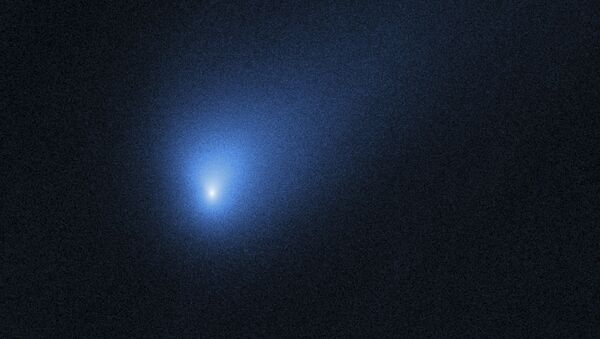NASA has identified the strange chemical composition inside 2I/Borisov, an interstellar comet that traveled through our solar system in 2019, providing insight into the origins of the space rock
An international team led by planetary scientists Martin Cordiner and Stefanie Milam of NASA's Goddard Space Flight Center released research on Monday that contained an analysis of the chemical makeu of 2I/Borisov.
📡ALMA reveals unusual composition of interstellar Comet 2I/Borisov ☄️We observed hydrogen cyanide gas (HCN, left) and carbon monoxide gas (CO, right). the comet contains an unusually large amount of CO gas. #MondayMotivation #StayatHome
— ALMA Observatory at Home📡 (@almaobs) April 20, 2020
👇https://t.co/7XbQml9TQF pic.twitter.com/Bnn7mvp3U5
According to the study, researchers working at the international astronomy facility used the Atacama Large Millimeter/submillimeter Array (ALMA) to identify that gas emerging from the comet contained more carbon monoxide (CO) than has been discovered in any other comet at this proximity to the sun, just under 186 million miles (300 million kilometers).
Specifically, the concentration of CO was between nine and 26 times above average for comets that traverse the solar system, according to National Radio Astronomy Observatory (NRAO).
"The comet must have formed from material very rich in CO ice, which is only present at the lowest temperatures found in space, below minus 420 degrees Fahrenheit (minus 250 degrees Celsius)," Milam said in the NASA release.
"If the gases we observed reflect the composition of 2I/Borisov's birthplace, then it shows that it may have formed in a different way than our own solar system comets, in an extremely cold, outer region of a distant planetary system," Cordiner said.
Astronomers have not yet identified what kind of star the comet originally formed around, but it is suspected to have come from a cold region in a larger protoplanetary disk, or a rotating disk of planet-formed dust and gas traveling around a newly-formed star.
2I/Borisov was first discovered by amateur astronomer Gennady Borisov on 30 August 2019, becoming the second extrasolar object ever discovered within our planetary system after the finding of interstellar object 'Oumuamua' in 2017.
Astronomers took a closer look at the comet in December 2019, using ALMA, and discovered that 2I/Borisov was traveling at some 21 miles per second as it sped through the solar system.
Researchers will now compare the comet's chemical makeup with other interstellar objects to find out if its unusually high levels of CO are unusual.


